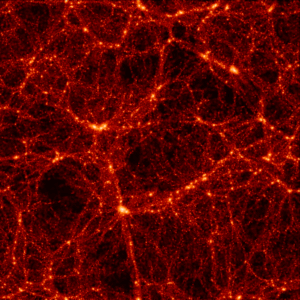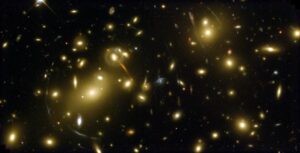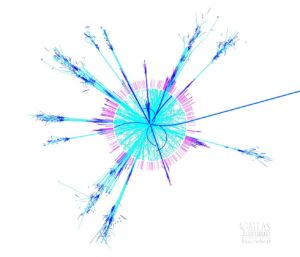Research details
Overview
In the past two decades, cosmology has transformed into a precision science, with important new questions revealed or brought into focus by a wealth of observational data. Among the most prominent issues are the cause of late-time accelerated expansion and the nature of early universe inflation. New observations, including data of the Planck and Euclid satellite experiments, are making various novel observational tests possible, and require increasingly precise treatment of cosmological inhomogeneities. Another topical field is cosmology related to electroweak physics, probed at the LHC at CERN.
Late universe inhomogeneities
The discovery of the accelerated expansion of the universe at late times was rewarded with the Nobel prize in physics in 2011, and the Nobel prize committee characterised its cause as perhaps the biggest enigma in physics today. While simple vacuum energy fits the observations well, there are many alternatives, which will face increasingly tight tests in the coming decade. One possibility is that the observed acceleration is due to the effect of structure formation on the expansion of the universe and on light propagation. Even if the impact of inhomogeneities is too small to explain the accelerated expansion, detailed modelling of the effect is important for precision analysis of observations, particularly gravitational lensing. The study of inhomogeneities also ties in with theoretical questions such as the Newtonian limit of general relativity in a cosmological setting and the inclusion of general relativistic effects in cosmological simulations.
Inflationary perturbations and LHC cosmology
Inflation is recognised as the most successful scenario for the early universe. Originally proposed to account for homogeneity, isotropy and spatial flatness of the universe, the biggest success of inflation has been in explaining the origin of inhomogeneity from quantum fluctuations. Inflation is the only area of physics where the interface of general relativity and quantum physics is probed observationally. There are numerous interesting questions related to quantum effects, such as loop corrections, possible quantum non-equivalence of classically equivalent coordinatisations of field space and decoherence.
Cosmology related to electroweak physics is particularly topical as the LHC is taking data. The most plausible points of contact between cosmology and particle physics at the LHC are inflationary models involving the electroweak scale, such as Higgs inflation, and models of the electroweak phase transition and dark matter.
Cosmological observations and simulations

Matter distribution in an N-body simulation. Credit: Jörg Colberg / VIRGO
The transformation of cosmology in the past two decades has been driven by the increasing breadth and precision of observations, rather than theoretical sophistication. It has become possible to accurately test fundamental properties such as homogeneity, isotropy and spatial flatness in a model-independent way, by combining measurements of distance with those of expansion rate, gravitational lensing or, with upcoming observations of the Gaia satellite, cosmic parallax. Model-independent comparison of qualitatively different observations will be an increasingly important check on the current cosmological paradigm. Another crucial change has been the increased feasibility of running large cosmological simulations to access the non-linear regime of cosmological evolution. This makes it possible to use observations of various aspects of structure formation and matter distribution on large scales for novel cosmological tests, such as comparing homogeneity properties of simulations and observations, or using voids as sensitive probes of vacuum energy. The BOSS survey of the Sloan Digital Sky Survey, which is scheduled to conclude in 2014, provides improved data on distances, expansion rates and lensing. In particular, the CODEX survey will yield the largest X-ray cluster catalogue to date. Spectroscopy of strong lensing features will be available from ESO telescopes. The Euclid satellite is the premier next generation large scale structure survey. Euclid is scheduled to launch in 2020, and there is a lot of theoretical work to be done, including on modelling non-linear effects of inhomogeneities and determining different cosmological tests to be done with the data.

